2025 BMC Ecology and Evolution and BMC Zoology Image Competition: The Winning Images
Published in Ecology & Evolution and Zoology & Veterinary Science
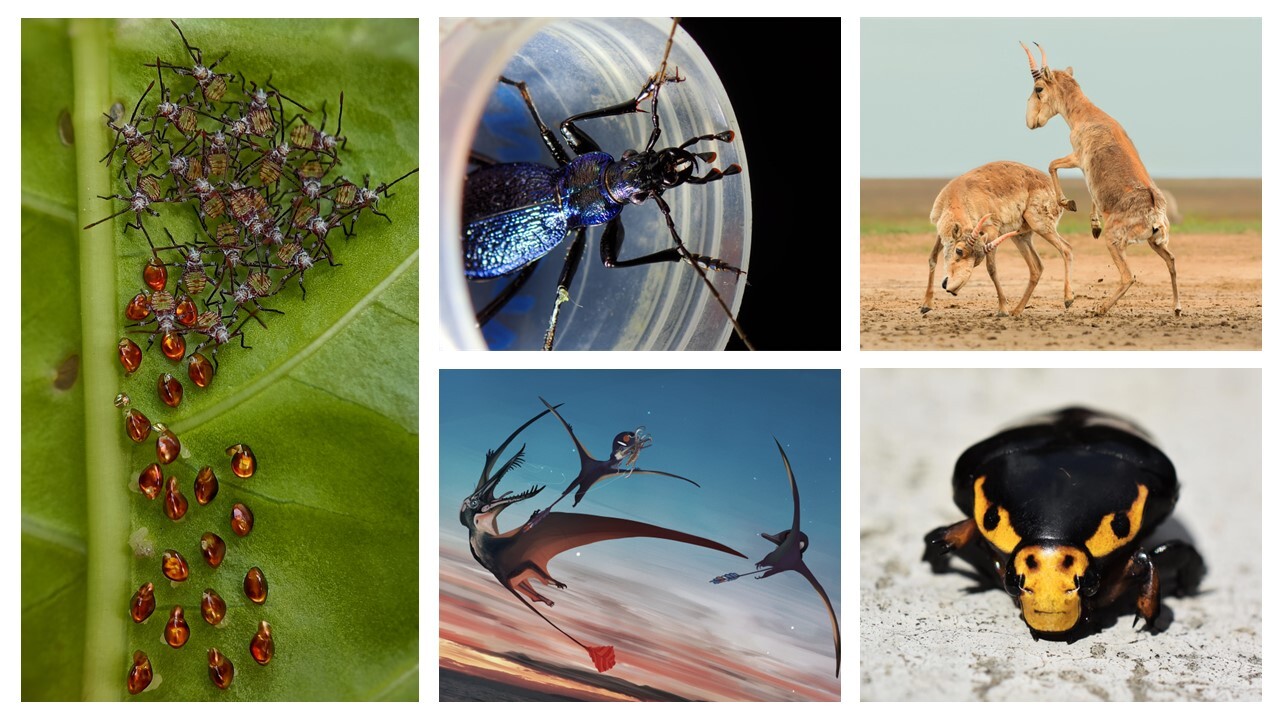
Now an anticipated annual event, the competition celebrates the creativity and curiosity of researchers worldwide. We invited anyone affiliated with a research institution to submit their best images to the following four categories: ‘Collective and social behaviour’, ‘Life in motion’, ‘Colourful strategies’, and ‘Research in action’.
Our Senior Editorial Board Members lent their expertise to judge the submissions, selecting the overall winner, best image, and runner-up from each category. The judges chose the winning images not only for their visual appeal, but also for the strength and clarity of the scientific stories they told.
Please enjoy viewing our winning images.
Overall winner
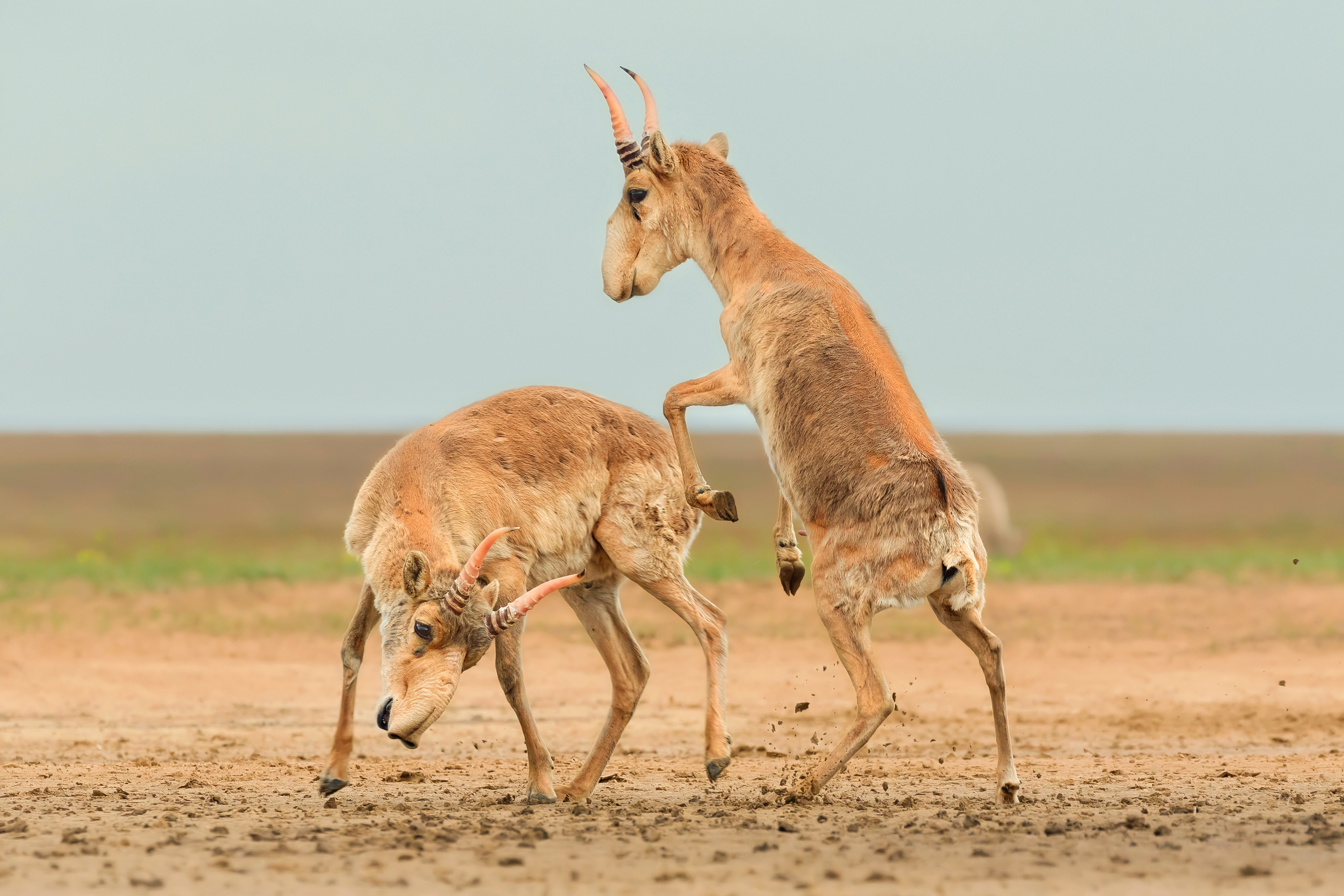
The overall winning image shows two male saigas (Saiga tatarica) in a sparring match on the open banks of a steppe lake. The photo was captured by Andrey Giljov, a Senior Lecturer at Saint Petersburg State University, who comments, “Saiga fights in spring, outside of the tournament season, are quieter and more about training than determining status. However, the males take every opportunity to practice.” Native to the steppes of Central Asia, saigas are instantly recognisable by their oversized, tubular noses, which help filter dust and warm cold air. During the rut, peaking in late autumn and early winter, males form and defend harems of around 30 females, engaging in intense fights that can lead to serious injuries. The stakes are high, with some males losing a third of their body weight during this period and risking death. Andrey explains, “To photograph the saigas from ground level, we had to set up a camouflaged hide near this so-called social arena. We had to conceal ourselves in the dark to avoid scaring off approaching saigas or making unnecessary noise; otherwise, the animals would not come close.”
Collective and social behaviour: best in category

Sritam Kumar Sethy, a student at Berhampur University, won Best in Category for “Collective and social behaviour” with a beautiful image of newly hatched Acanthocoris scaber nymphs clustered beneath a leaf. This tight grouping offers protection from predators and helps the nymphs conserve moisture in their vulnerable early stages. The leaf underside provides a humid microclimate and access to nutrient-rich vascular tissue an ideal feeding site. Though often considered pests, these bugs play key ecological roles, from shaping plant defences to supporting food webs. As Sritam reflects, “Nymphs are both shaped by and help shape the natural world.”
Collective and social behaviour: best in category
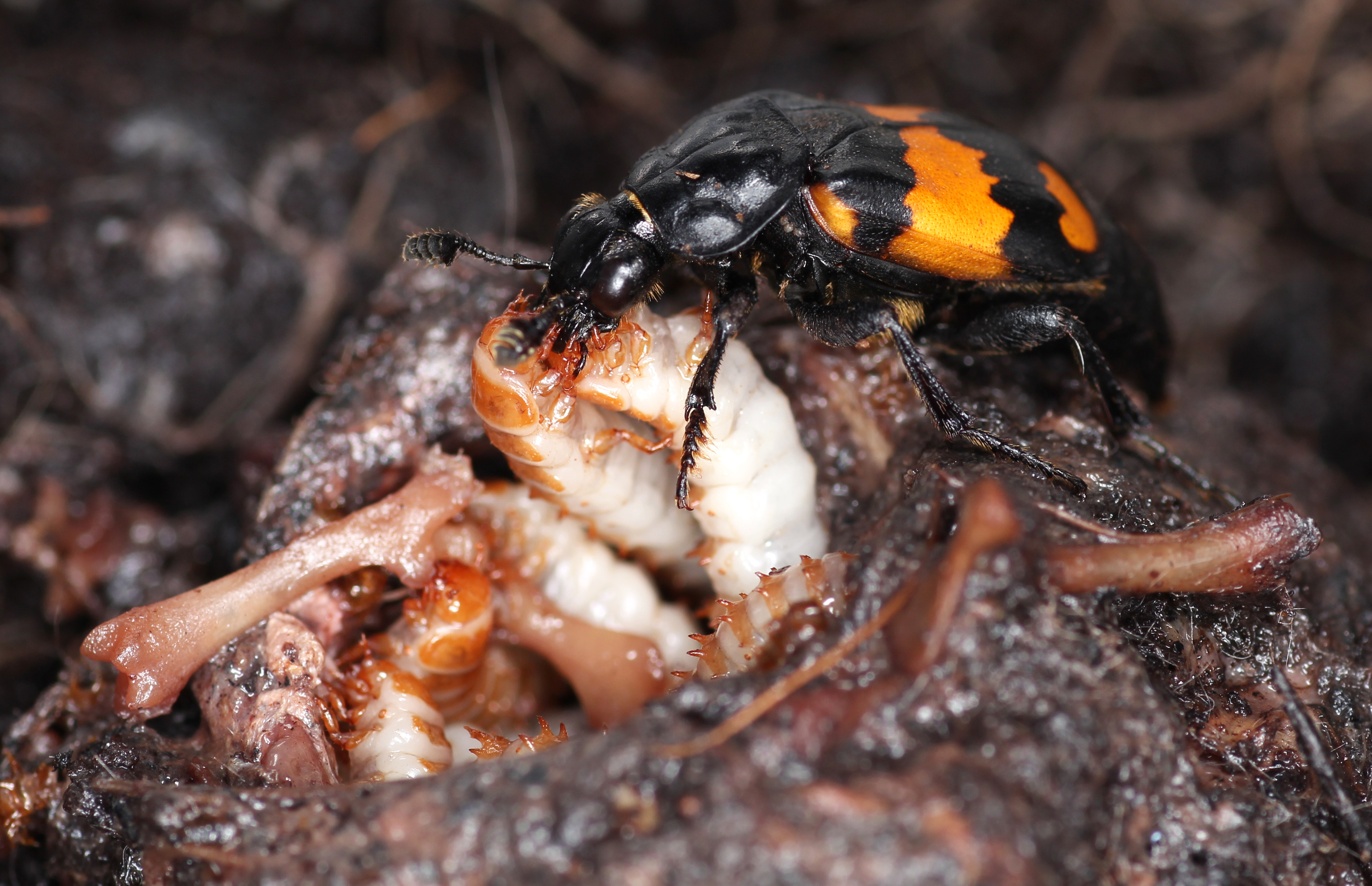
Runner-up Nick Royle, Associate Professor at the University of Exeter, photographed a mother burying beetle (Nicrophorus vespilloides) feeding her larvae regurgitated mouse meat. This rarely seen behaviour, typically hidden underground, is captured here in a lab, where burying beetles serve as a model for studying the evolution of parental care. Once buried underground, these beetles prepare carcasses by removing fur, shaping them into balls, and applying antimicrobial secretions. They lay their eggs nearby and once the larvae hatch, they make their way to the carcass to be fed by their parents.
Life in motion: best in category

Pterosaurs in flight over the Jurassic Hebridean Basin. Attribution: Natalia Jagielska.
Natalia Jagielska, a digital artist and Postdoctoral Fellow at the Chinese University of Hong Kong won best in category for her image of Pterosaurs in flight over the Jurassic Hebridean Basin. Natalia explains, “The Jurassic Hebridean Basin once covered what is now Scotland. This water body formed a pathway to the Boreal Sea, an area currently known as the North Pole. The sea was teeming with life, and recent discoveries of margin-marine deposits have yielded two pterosaur skeletons: a 2.5-meter wingspan pterosaur known as Dearc, and a smaller, crested pterosaur called Ceoptera. Despite their differing cranial anatomies, teeth morphology, and wing shapes, these pterosaurs could interact and compete for food during periods of environmental stress. Set 170 million years ago in the Middle Jurassic, this image portrays these flying reptiles as they hunt along the shoreline."
Life in motion: runner-up
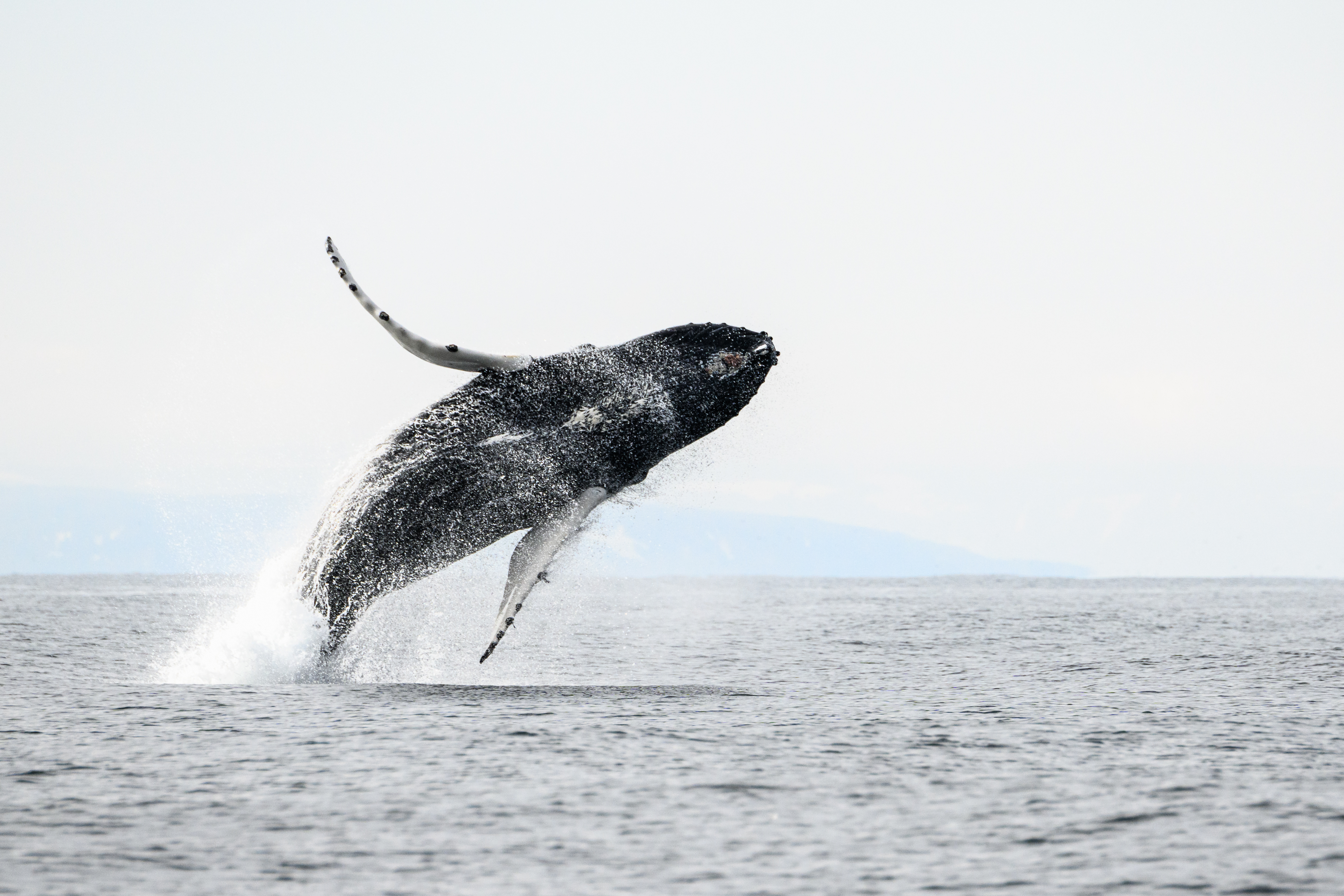
Alwin Hardenbol, a postdoctoral researcher at the Natural Resources Institute Finland, captured a breaching humpback whale (Megaptera novaeangliae) from a rib boat in Varanger, Norway. His photo was named runner-up in the ‘Life in motion’ category. Alwin explains, “Breaching is a fascinating behaviour from a scientific perspective, as it is still inconclusive what purpose it serves. Researchers have suggested multiple reasons, including communication, play, or the loosening of skin parasites. In terms of communication, breaching, along with other surface behaviours like tail slapping and flipper slapping, produces loud sounds, especially underwater, and can be heard from a considerable distance. That breaching creates such a loud sound is probably unsurprising, as these animals can weigh up to 40 metric tonnes. It’s unbelievable to imagine how such an animal can even jump out of the water like that. To achieve a nice breach (>90% out of the water), Humpback whales must move around 29 km per hour.”
Colourful strategies: best in category

Deimatic beetle’s eye for an eye. Attribution: Abhijeet Bayani, Indian Institute of Science.
Dr Abhijeet Bayani, a biologist from the Indian Institute of Science, captured the winning image for the ‘Colourful strategies’ category. Some beetles use clever visual tricks called deimatic displays to scare or confuse predators. For example, they might suddenly reveal eyespots, markings that look like large eyes, to mimic larger predators or make themselves appear bigger or more threatening than they really are. These displays are a great example of how insects use colour as part of their survival strategy. Dr Bayani comments, “When I first found the beetle, it appeared to be just a drab-looking insect without any evident pattern. But as I began spending time photographing it from the front, the beetle seemed to perceive my camera lens as a predator. It suddenly turned jet black and bright yellow, developing black spots that created a bull-like face, out of nowhere. Whenever I changed camera angles, it manoeuvred its bull-like face to confront the lens. When I tried harder to get its side profile, it violently headbutted the lens - thankfully, without cracking the glass!”
Colourful strategies: runner-up
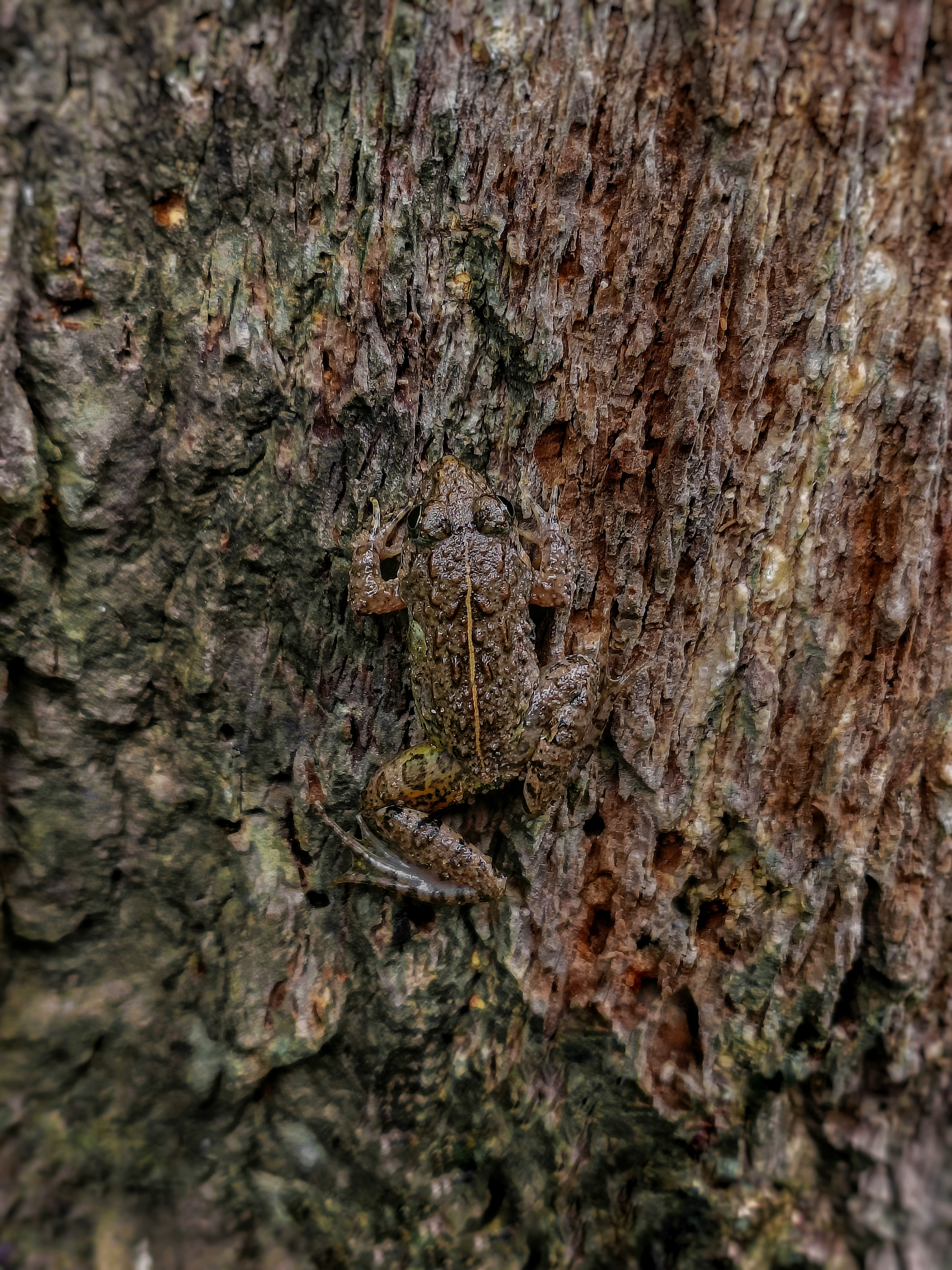
A photo submitted by Sritam Kumar Sethy was also chosen as the runner-up for ‘Colourful strategies’. If you look closely, you'll see an Asian Grass Frog, also known as Boie's Wart Frog (Fejervarya limnocharis), which is nearly indistinguishable from the rugged bark of the tree it clings to. Sritam explains, "The frog's camouflage serves a dual purpose: it helps evade predators such as snakes and birds while also providing the perfect disguise for ambushing prey. With patience and precision, it hunts small insects, millipedes, and worms, relying not on speed but on invisibility and timing."
Research in action: best in category
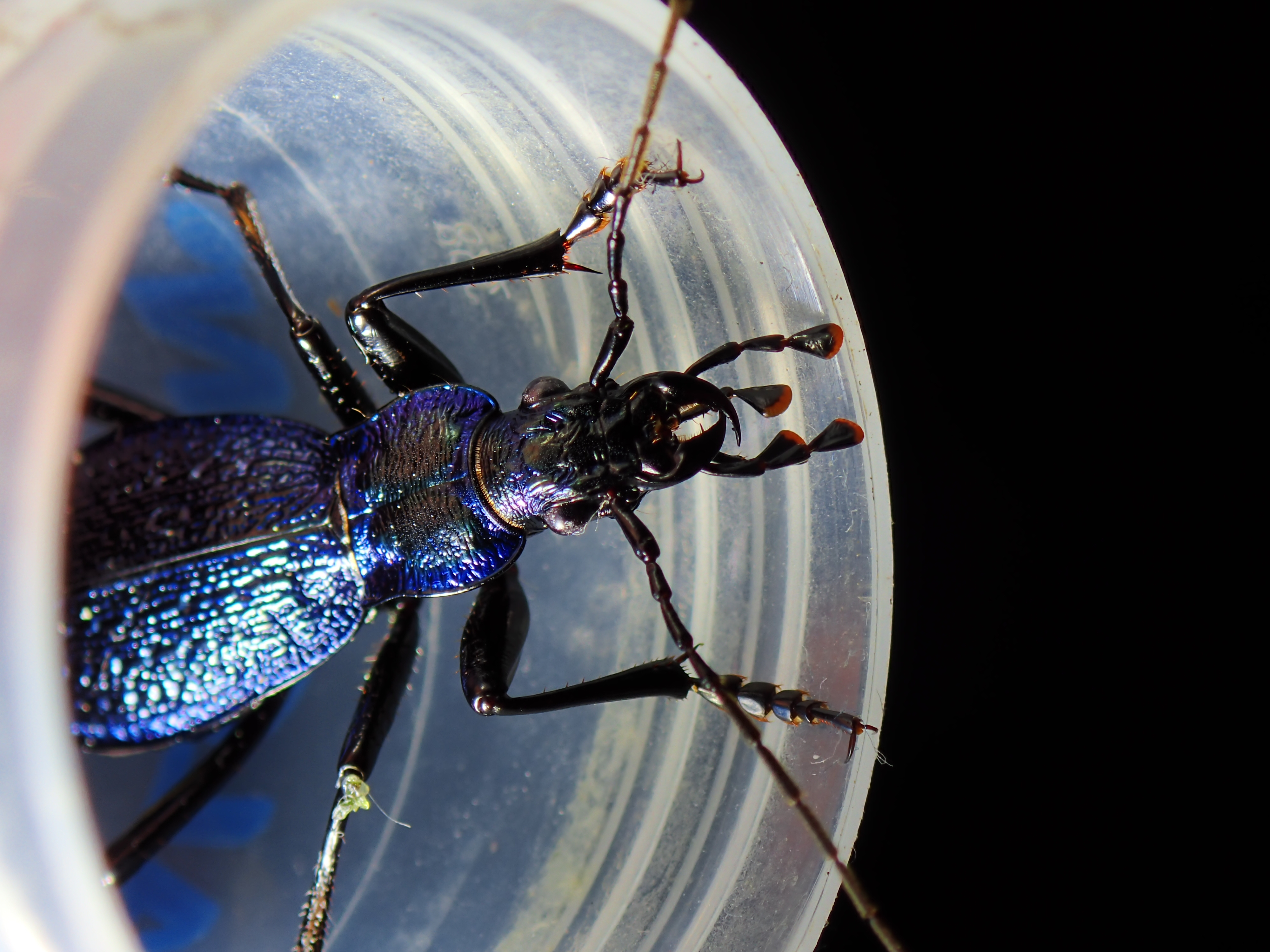
Nick Royal, from the University of Exeter, won Best in Category for "Research in action" with a photo of a male blue ground beetle (Carabus intricatus) from a temperate rainforest in southwest England. The beetle, pictured in a falcon tube, is about to be fitted with a miniature radio tag to track its movements and behaviour over two weeks. Nick explains, “Blue ground beetles (BGB) are the largest and one of the rarest ground beetles in the UK, found only in a few specific sites, primarily in Devon and Cornwall.” These habitat specialists are confined to temperate rainforests, which once covered around 20% of the UK but have now been reduced to just 1% in scattered fragments. Flightless and slow to reproduce, with limited dispersal ability and short seasonal activity windows, BGBs are particularly vulnerable to habitat loss and other human-driven changes. Using radio-tracking, a method rarely applied to carabid beetles, his groups research sheds light on their habitat preferences, revealing that BGBs thrive in warm, humid interiors of forests with abundant leaf cover and decaying wood.
Research in action: runner-up
.jpg)
Jack Bamber, a Lecturer in Ecology and Conservation at the University of Aberdeen, submitted the runner-up, a camera-trap photo from Scotland’s Cairngorms. It shows a mother capercaillie (Tetrao urogallus) watching over her four chicks as they take a dust bath. The capercaillie is a ground-nesting bird at risk of extinction in the UK, with fewer than 600 individuals remaining. Jack comments, “These pictures provide an insight into what broods get up to at dust baths and allow the number of chicks accompanying a hen to be counted and used to estimate productivity.” To support conservation, researchers tinvestigated diversionary feeding, which involves placing baited artificial nests to lure native predators like pine martens away from real capercaillie nests.
Highly commended
We received many fantastic photos beyond our winning images, and we're excited to showcase some of our favourites below.

Alwin Hardenbol submitted this beautiful image with the caption, “Each autumn, vast flocks of Barnacle Geese embark on a long-distance journey from their Arctic breeding grounds to their wintering sites along the coasts of Western Europe. Finland serves as a vital stopover where the geese rest and refuel to build up the fat reserves needed for the second half of their 2,000-mile journey. Within these flocks, some individuals keep a lookout for potential predators while others feed, as depicted in this image. I managed to quietly approach this flock without alarming them to capture this moment of cooperation.”

A photo capturing an aerial battle between birds of prey over a freshly caught eel received many votes. These photos were taken by Delip K. Das from the University of Groningen. Delip explains, “I captured these photographs on Nijhum Dweep, a coastal island in Bangladesh, part of the world's largest delta. A Brahminy Kite had just caught an eel - a large and still-struggling fish. As the Kite wrestled to secure its catch in flight, another challenger appeared, attempting to hijack the meal. The dramatic moment unfolded above the mangrove-fringed waters, reflecting the intensity and agility of raptors in the wild”.

We received many strong entrants in the “Colourful Strategies” category, making judging challenging. Among the favourites that did not win was a photo of a jewelled gecko taken by Jonathan Goldenberg from the University of Oslo. Jonathan commented, “In nature, color is not just decoration; it is survival. From attracting mates to warding off predators, vivid hues serve a spectrum of evolutionary purposes. For the Jewelled gecko (Naultinus gemmeus), color becomes concealment. Its striking emerald-green skin, flecked with yellow or white markings, mirrors the sunlit leaves of native shrubs on the Otago Peninsula. This dazzling mimicry helps it remain invisible to predators, a masterclass in camouflage disguised as brilliance. Sadly, even the best disguise cannot protect against habitat destruction, invasive species, or illegal poaching. Now listed as Endangered by the IUCN, this reptilian gem’s greatest defense, blending in, may not be enough without our help to protect its disappearing home.”
Many congratulations to all of our winners!
All the figures have been released under a Creative Commons Attribution License (CC BY), so everyone is welcome and encouraged to share them freely, as long as you clearly attribute the image to the author. To learn more about the competition and the winning images, please read our accompanying editorial.
Follow the Topic
-
BMC Ecology and Evolution

An open access, peer-reviewed journal interested in all aspects of ecological and evolutionary biology.
-
BMC Zoology

This is an open access, peer-reviewed journal that considers articles on zoology, including comparative physiology, mechanistic and functional studies, morphology, life history, animal behavior, signaling and communication, cognition, parasitism, systematics, biogeography and conservation.
Related Collections
With Collections, you can get published faster and increase your visibility.
Bioacoustics and soundscape ecology
BMC Ecology and Evolution welcomes submissions to its new Collection on Bioacoustics and soundscape ecology. By studying how animals use sound and how noise impacts them, you can learn a lot about the well-being of an ecosystem and the animals living there. In support of the United Nations Sustainable Development Goals (SDGs) 13: Climate action, 14: Life below water and 15: Life on land, the Collection will consider research on:
The use of sound for communication
The evolution of acoustic signals
The use of bioacoustics for taxonomy and systematics
The use of sound for biodiversity monitoring
The impacts of noise on animal development, behavior, sound production and reception
The effect of anthropogenic noise on the physiology, behavior and ecology of animals
Innovative technologies and methods to collect and analyze acoustic data to study animals and the health of ecosystems
Reviews and commentary articles are welcome following consultation with the Editor
(Jennifer.harman@springernature.com).
Publishing Model: Open Access
Deadline: Mar 27, 2026
Impact of climate change on ecology and evolution
BMC Ecology and Evolution is calling for submissions to our Collection on Impact of climate change on ecology and evolution. This Collection seeks to explore how climate change alters ecological dynamics and evolutionary processes, including shifts in phenology, local adaptations, and responses to invasive species. By understanding these shifts, we can gain insights into the resilience of ecosystems and the adaptive capacity of species in a rapidly changing world.
The significance of this research is underscored by the ongoing challenges posed by climate change, which threatens biodiversity and disrupts ecosystems. Recent advances in ecological modeling and genetic analyses have provided new tools to assess the impacts of environmental change on species and communities. These insights are crucial for developing conservation strategies and management practices aimed at mitigating the effects of climate change and preserving biodiversity for future generations.
Continued research in this area promises to enhance our understanding of the interplay between climate change and ecological dynamics. As new data emerges, we may uncover novel adaptive strategies employed by species in response to environmental shifts, revealing patterns of gene flow, population dispersal, and phenotypic plasticity. This knowledge can inform conservation strategies that are increasingly vital in an era of unprecedented environmental change.
•Climate change and biodiversity loss
•Phenotypic plasticity in response to environmental change
•Effects of invasive species on ecosystems
•Local adaptation and genetic structure in changing environments
This Collection supports and amplifies research related to SDG 13: Climate Action and SDG 15: Life on Land.
Publishing Model: Open Access
Deadline: Mar 03, 2026






Please sign in or register for FREE
If you are a registered user on Research Communities by Springer Nature, please sign in